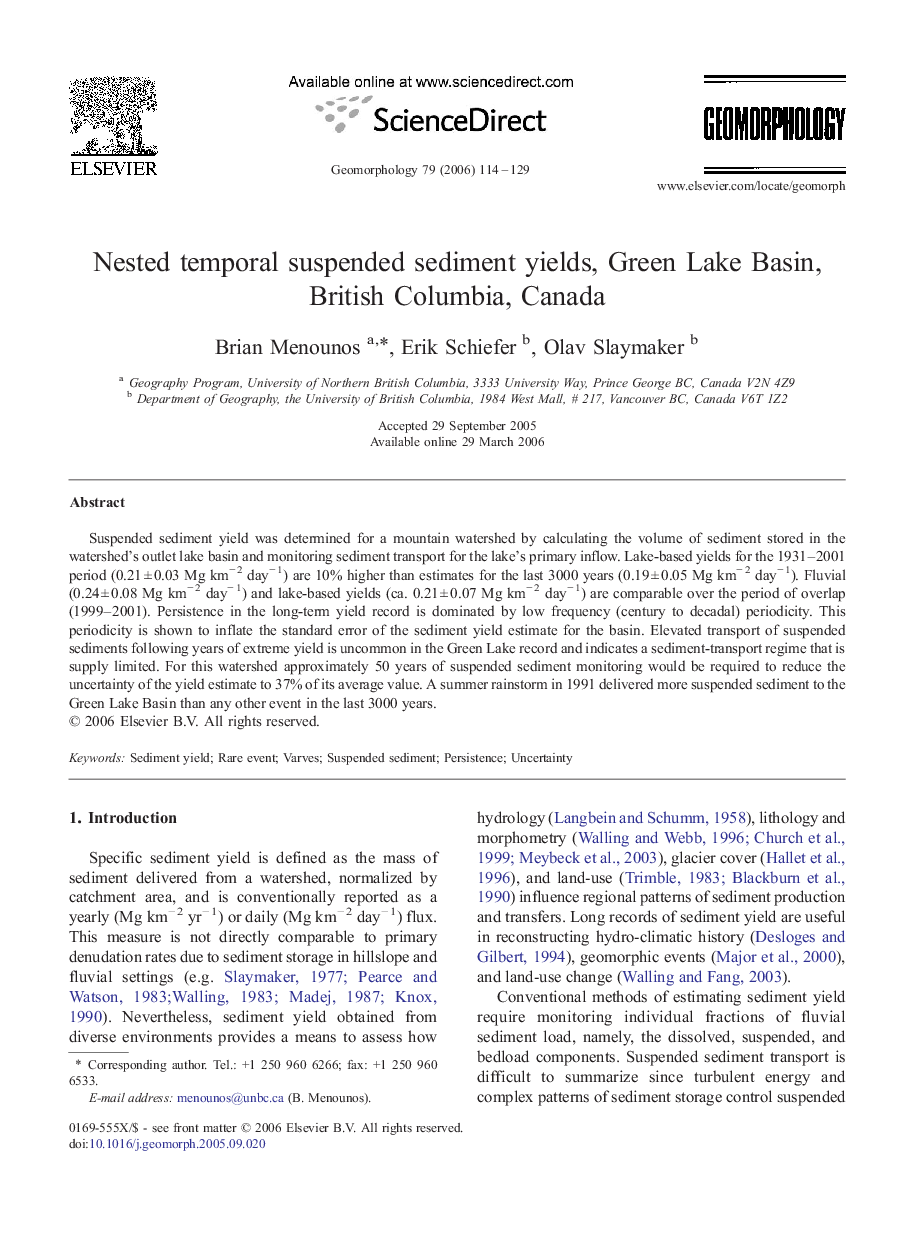| Article ID | Journal | Published Year | Pages | File Type |
|---|---|---|---|---|
| 4687596 | Geomorphology | 2006 | 16 Pages |
Suspended sediment yield was determined for a mountain watershed by calculating the volume of sediment stored in the watershed's outlet lake basin and monitoring sediment transport for the lake's primary inflow. Lake-based yields for the 1931–2001 period (0.21 ± 0.03 Mg km− 2 day− 1) are 10% higher than estimates for the last 3000 years (0.19 ± 0.05 Mg km− 2 day− 1). Fluvial (0.24 ± 0.08 Mg km− 2 day− 1) and lake-based yields (ca. 0.21 ± 0.07 Mg km− 2 day− 1) are comparable over the period of overlap (1999–2001). Persistence in the long-term yield record is dominated by low frequency (century to decadal) periodicity. This periodicity is shown to inflate the standard error of the sediment yield estimate for the basin. Elevated transport of suspended sediments following years of extreme yield is uncommon in the Green Lake record and indicates a sediment-transport regime that is supply limited. For this watershed approximately 50 years of suspended sediment monitoring would be required to reduce the uncertainty of the yield estimate to 37% of its average value. A summer rainstorm in 1991 delivered more suspended sediment to the Green Lake Basin than any other event in the last 3000 years.
